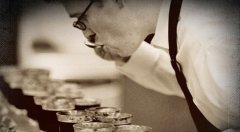The History of Fine Coffee Culture Coffee Culture in Germany

In 1721, the earliest coffee shop in Germany was born in Berlin. As soon as cafes became popular in Germany, they were restricted by the local authorities. Therefore, compared with other countries, the development of German coffee is relatively simple.
It was not until the early 19th century that coffee became one of the best money-making tools at the disposal of Germans. In the mid-19th century, the vigorous development of coffee farming in Latin America and Central America was affected by the abolitionist movement, so coffee plantation owners changed imported slaves to recruit coffee farmers from Europe, and many German immigrants set foot on the land of Brazil and Guatemala. In order to attract immigrants, the Guatemalan government passed a land law in 1877 to assist German immigrant areas and granted ten-year income tax relief and six-year tariff relief for production equipment. As a result of this one-sided policy, by the end of the 19th century, the Germans owned 19% of the coffee fields in Guatemala, accounting for 40% of the country's total production. Germans who made their fortune by farming also attracted their fellow villagers to invest in coffee producing areas and lay railways to transport coffee beans. During the same period, German coffee merchants also took advantage of the opportunity to monopolize the distribution of top coffee beans in Latin America. At least 80% of Guatemalan coffee beans are shipped to all parts of Europe by German businessmen.
It was only the two world wars that made them experience the same coffee nightmare as the Europeans-because they were far away from the country of origin, so once the war broke out and maritime transport was blocked, the Europeans had a coffee famine.
During World War I, the United States officially declared war against Germany in 1917. Because the United States agreed to purchase 1 million bags of coffee beans as military food, the Brazilian government also declared war on Germany and arrested a group of Germans who settled in Brazil. At the same time, the United States passed a bill to confiscate German property in the United States. In 1918, Guatemala passed a similar bill. German coffee in Latin America was also hit hard, and Americans took the opportunity to step in. The defeat of the Germans in coffee in World War I was all made up at the beginning of World War II. When Hitler struck Poland with lightning in 1939, the business of 10 million bags of coffee came to a halt in Europe each year. In 1940 Hitler's army swept across Europe, the Nazis closed all ports, and the whole of Europe (except Germany) was in a coffee famine. But at the end of World War II, Brazil and Guatemala declared war on Germany one after another, while Americans continued to take measures to confiscate the property of Germans in Latin America. After the war, the German economy recovered rapidly, and at the same time, it also quickly restored its position in the coffee trade.
Today, Germany is the world's second largest consumer of coffee, second only to the United States. In terms of per capita consumption, it is much higher than that of the United States.
Important Notice :
前街咖啡 FrontStreet Coffee has moved to new addredd:
FrontStreet Coffee Address: 315,Donghua East Road,GuangZhou
Tel:020 38364473
- Prev

The former coffee kingdom of Brazil
In the 1660s, the South American continent was still in a natural silence, and the aborigines lived a happy and heavenly life in this rich and fertile land. Brazil, which covers an area of more than 3 million square kilometers, occupies a major part of South America. In 1727, Pachta, a Portuguese officer, seduced the wife of the Governor of French Guiana into introducing coffee to Brazil with coffee seeds.
- Next

Coffee Culture History of British Literary Cafe
It is known all over the world that English people are addicted to tea. But from the mid-17th century to the early 18th century, the whole of London was soaked in coffee instead of tea. British men switch from drinking to drinking coffee, or both. When they get drunk in a pub, they go to the cafe to sober up with caffeine and then go to the pub to continue drinking. The first coffee shop in England, which appeared at Oxford University in 1650, was a
Related
- How did the Salvadoran coffee industry develop in Central America?
- What exactly does the golden cup extraction of coffee mean?
- The Origin of Coffee flower
- [2023 Starbucks World Earth Day] there are more meaningful things besides free Starbucks coffee!
- What kind of coffee is there in Spain? 9 Flavors of Spanish Coffee
- Aromatic African coffee| Kenya's coffee culture and historical production area
- Liberica Coffee Bean knowledge: the characteristics of Liberian Coffee beans of the three original species of Coffee beans
- The origin and formula of Spanish latte introduces the taste characteristics of Bombon coffee in Valencia, Spain.
- How to adjust the solution of over-extracted coffee
- What is the tasting period of coffee beans? What is the period of coffee and beans? How should coffee wake up and raise beans?

